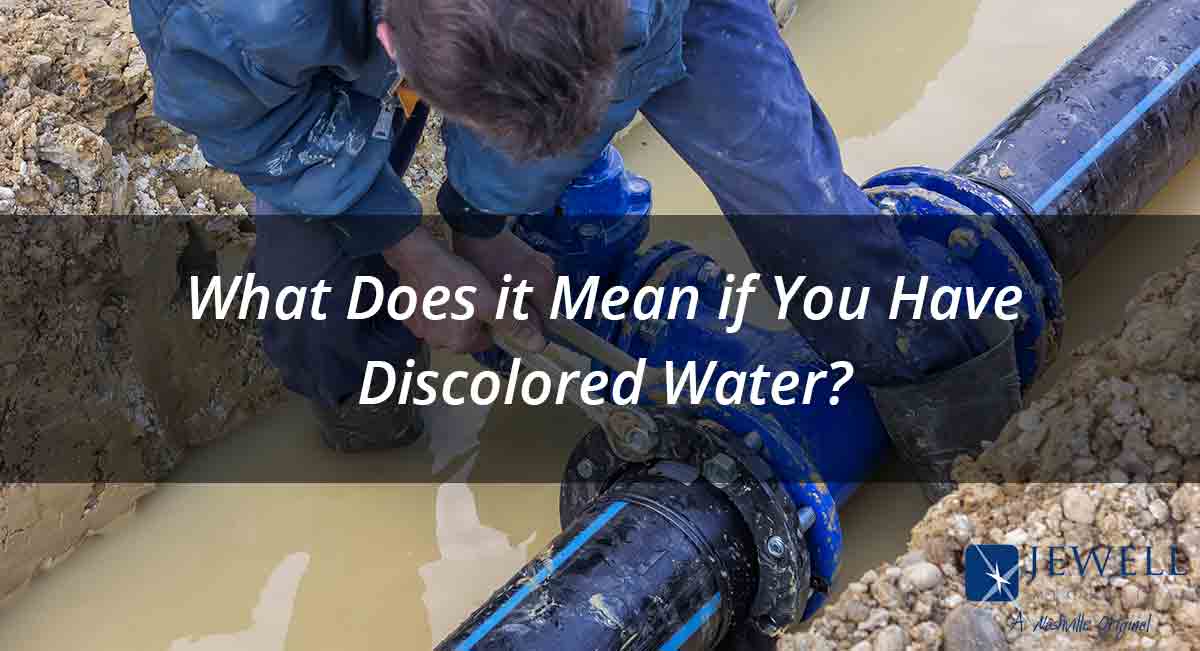
The last thing you expect from your faucets is gray, brown or rusty-looking water. Residential plumbing connects to city service or private wells, both of which should provide clean, clear water for your drinking glass, shower or washing machine.
But no system is perfect. Contaminants can enter the water supply at any point, while environmental factors and damaged lines may play a role. If you live near Centerville, in Hickman County, you might remember the mayor declaring a water emergency that lasted a week this past winter, one that resulted in a boil-water advisory. In that case, heavy rains and resulting flood waters were the primary cause.
But the pipes in your home can also be the culprit. If they’re older, galvanized metal or any material that’s been damaged, the clean water that arrives at your home could turn ugly before it reaches a tap.
Following are some of the most common causes of discolored water, what they mean for your safety and what you can do about them.
Damaged Water Supply Pipes
Although America’s public utilities almost always provide water that’s safe, there’s no guarantee. Nashville.gov says local water quality consistently exceeds state and national standards, which is great news, as Metro Water Services treatment plants are the first line of defense against discolored water and water that’s potentially hazardous to drink.
But your drinking water is only as safe as the supply lines that carry it. While local water quality remains high, physical damage to the pipes that carry water to your home could change that.
If a building developer accidentally digs into a supply line nearby, the resulting broken pipe could allow dirt and other contaminants into the water where it’s carried to your home. Erosion, mudslides, aggressive tree roots and other natural factors can also break lines and allow dirt inside.
As one might expect, utility supply lines are buried deep enough to avoid the freeze/thaw cycles of winter. But the closer the line gets to your home, the shallower those lines can be. If the pipe between the water meter and your house is above the frost line (between 12 and 18 inches), frigid weather could freeze the water inside, break the line and let dirt inside.
Shallow pipes buried on your property are also easier for you to damage by accident. Always call 811 before you dig. They’ll notify the water utility, which will mark the location so you can avoid the lines.
Corrosion Inside Residential Plumbing Pipes
Have you ever turned on a faucet that you rarely use only to see rusty-looking water pour out? If the water in the rest of your home is fine, you might have corrosion. It’s probably confined to the supply for that room.
Reuben Saltzman of Structure Tech Home Inspections reminds us that corrosion inside galvanized steel pipe can build up and restrict the flow of water. The telltale sign is rusty water, which is built up corrosion flowing out. It’s not unusual to see more of it in low-traffic areas like a seldom-used guest bathroom. Corrosion builds up and has nowhere to go, so you get a burst of it when you turn on the faucet.
Meanwhile, discolored water usually means there’s a contaminant mixed in. One exception is water that looks slightly cloudy when you fill a clear glass. Air in the lines can give that appearance, which usually dissipates as the air bubbles make their way out.
Jewell Mechanical Can Repair and Maintain the Plumbing in Your Nashville Home
With Jewell Mechanical’s Plumbing Maintenance Agreement, you can take discolored water and any other plumbing problem in stride. Our licensed and bonded plumbers can help prevent problems through regular maintenance and find the cause of any issue that arises. You’ll get free diagnostics, discounts on repairs and priority customer status, too.
Trust Jewell Mechanical to get to the bottom of whatever plumbing issue is of concern. Contact us online or give us a call at (615) 469-5965.
Useful Resources:
24/7 Nashville Plumber Repair Services
